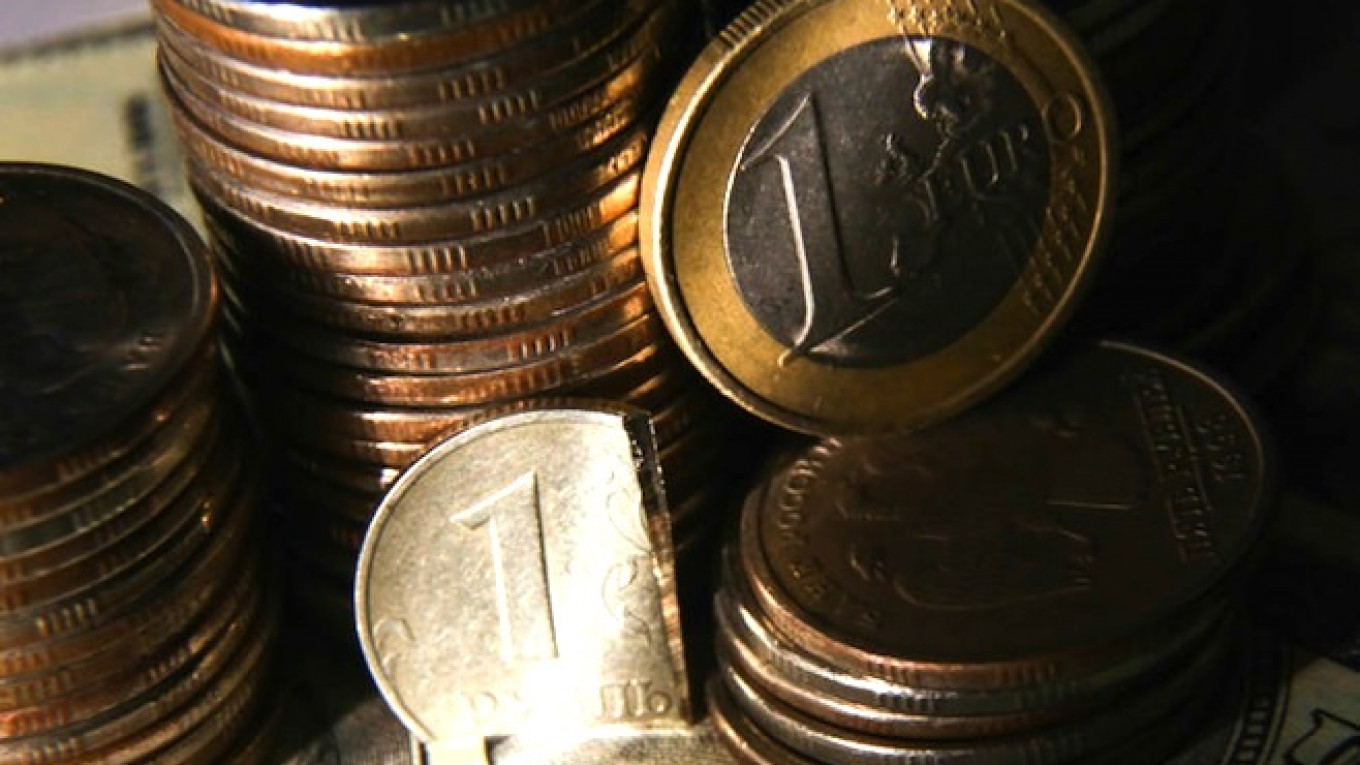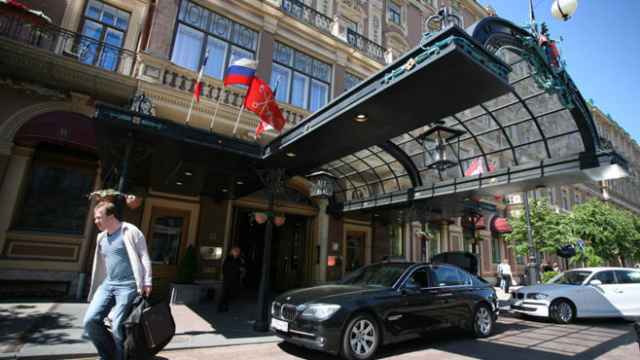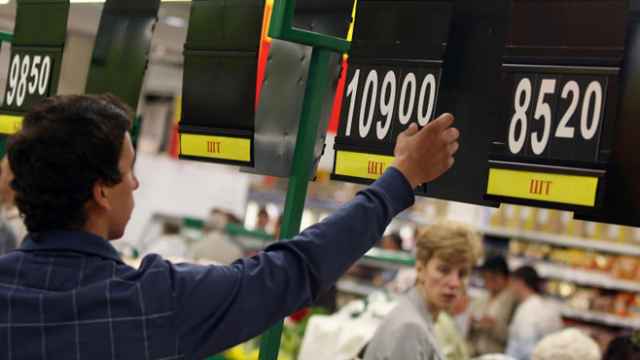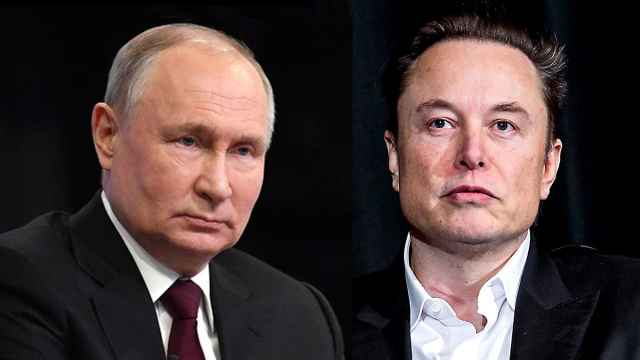The Russian currency strengthened sharply Wednesday, bolstering a recent rally driven by greater confidence in the ruble, easing international tensions over Ukraine and oil price stability.
The ruble jumped over 3 percent in morning trading to 53.4 against the U.S. dollar before paring gains through the day. In the early evening in Moscow the Russian currency was up 2.6 percent at 53.66 against the dollar and 2.2 percent at 58 against the euro.
The ruble has clawed back some of the losses it sustained during a currency collapse in December, driven by lower oil prices and Western sanctions on Russia over Ukraine, and is now trading at record highs for this year.
“The market has reconciled itself to the growth of the ruble and it's risky to stand against it,” ING's chief economist in Russia, Dmitry Polevoy, wrote in a note to investors Wednesday.
Bruised by wild ruble volatility over the last six months, which has seen the currency swing from the world's worst performing to its best performing, experts are reluctant to predict future values, but some analysts warned Wednesday that the ruble rebound could soon fizzle out.
The Russian currency has climbed 34 percent against the greenback since mid-January and 7.6 percent this month alone.
Unlike in December and January, the market is no longer pricing in “catastrophic scenarios” including possible capital controls, according to Oleg Kouzmin, chief economist at Renaissance Capital in Moscow.
A Ukraine cease-fire, which has drastically reduced the levels of violence in eastern Ukraine, and stabilizing oil prices have also given the currency a boost. The price of international benchmark Brent oil has recovered from lows of about $50 recorded in January and is now trading at about $57 after dipping slightly on new data from the United States on Wednesday.
Local purchases of rubles appear to be driving much of the gains. “Companies and, probably, the population as a whole continue to sell,” Polevoy said.
Much of the ruble's weakness in late 2014 and earlier this year was due to large debt payments due to foreign creditors by Russian companies unable to roll over loans after U.S. and European Union debt markets were closed to many Russian firms in the wake of Western sanctions.
Repayment peaks in December and March have passed and payments for the rest of this year are evenly spaced, according to Kouzmin.
But the rally is put into context by last year's huge ruble devaluation: the currency shed 41 percent of its value against the dollar through 2014 and in December crashed to 80.1 against the dollar, its lowest level since the late 1990s.
Even amid its current run of strength, the ruble is down 39 percent over the last six months.
While Central Bank officials have said that the period of extreme volatility for the currency is over, analysts and experts appear split over the ruble's future prospects.
The Russian currency could keep rising against the dollar if the Central Bank takes no action to halt its surge, according to Vladimir Bragin, the head of financial markets and macroeconomic analysis at Alfa Capital, in a note published by the RBC news website Tuesday.
Former Finance Minister Alexei Kudrin said last month that given a steady oil price and no new Western sanctions, the ruble would stabilize. The Russian currency was likely to trade between 58 rubles to the dollar and 64 rubles to the dollar for the rest of the year, he predicted.
Some experts caution, however, that the rally might not last. The current trend is driven by the temporary phenomenon of "foreign investors closing long positions on the ruble,” according to Maxim Korovin, a currency analyst at VTB Capital in Moscow.
Others warned that the Central Bank could step in to halt a lengthy rally that could reduce the value of tax revenues being collected by the government. “The Central Bank may start direct dollar buying at a 50ish level to prevent the budget deficit widening,” said Aram Kazrayan, a senior FX and Derivatives trader at MDM Bank in Moscow, in written comments.
Analysts at Sberbank CIB warned that the ruble could overshoot.
“We see more room for advancement but are wary of a potentially sudden reversal, as we see fundamental support as lacking,” they wrote in a note to investors Wednesday.
Contact the author at h.amos@imedia.ru
A Message from The Moscow Times:
Dear readers,
We are facing unprecedented challenges. Russia's Prosecutor General's Office has designated The Moscow Times as an "undesirable" organization, criminalizing our work and putting our staff at risk of prosecution. This follows our earlier unjust labeling as a "foreign agent."
These actions are direct attempts to silence independent journalism in Russia. The authorities claim our work "discredits the decisions of the Russian leadership." We see things differently: we strive to provide accurate, unbiased reporting on Russia.
We, the journalists of The Moscow Times, refuse to be silenced. But to continue our work, we need your help.
Your support, no matter how small, makes a world of difference. If you can, please support us monthly starting from just $2. It's quick to set up, and every contribution makes a significant impact.
By supporting The Moscow Times, you're defending open, independent journalism in the face of repression. Thank you for standing with us.
Remind me later.







